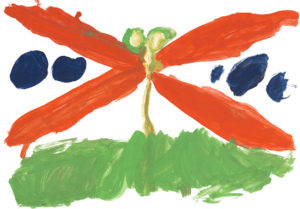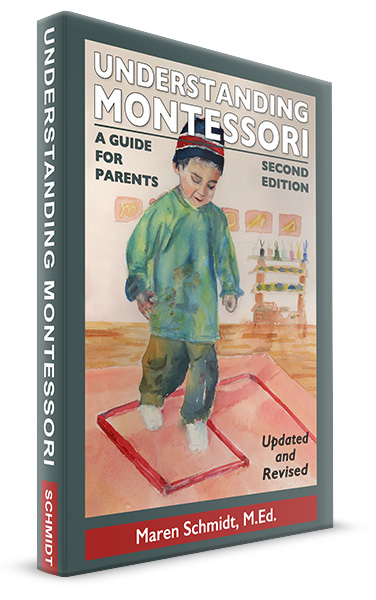
Betty Edwards in her book, Drawing on the Right Side of the Brain, explains that around age ten our logical “left-brain” style of thinking begins to dominate and overrides our creative “right-brain” type of thinking.
Our left-brain thinking criticizes our work, and out of our mouth comes words like: That doesn’t look like a bird. You can’t draw birds. You draw like a baby. How embarrassing.
The bossy left brain thoughts keep picking at our efforts until we lose heart and stop trying, our artistic skills languishing at a ten-year-old level.
We can rescue our artist by shifting to right-brained thinking.
As visual artists admit, training the eye to see is more important in artistic expression than training the hand to perform.
To prepare to work, creative types consciously shift their thinking to the right brain. This switch is aided by using right brain functions, such as movement by going for a walk, dancing, swimming, etc.; using music by listening to instrumental music, singing or humming; changing the lighting to be darker or softer; doodling or resting the eyes for five to ten minutes.
My favorite art lessons begin as I meet my students at the door fresh from outdoor activity. Soft classical music plays in a darkened classroom. I whisper to my students that it’s art time, and they should take care of getting a drink and going to the bathroom before sitting down with a piece of paper and an art box. I also ask my students to rest their eyes after they sit down.
A few side notes: As part of our artwork, we talked in the classroom about right- and left-brain functions and how the artist inside you should ignore left-brain criticisms.
Also I brought to my students’ attention that everyone’s work is individualistic. ”Does Jimmy look like Bradley?” I’d ask. ”No, so we can’t expect anybody’s work to look like anyone else’s, because it is an individual expression.” Any comments about a drawing could only be about what you liked about the work.
An art box consists of eight wide-tipped colored markers, eight fine-tipped markers and twelve colored pencils with a hand-held sharpener.
We’d begin with a doodling exercise, adapted from Mona Brookes’ book, Drawing with Children. This exercise reinforces the individual nature of art since every doodle is different with the same instructions.
Doodling exercise:
- Turn your paper any way you want.
- Take a fine tipped marker and make three straight lines on the paper in any direction. Make sure the lines go from one side to another.
- Take a wide-tipped marker and make three dots, any size, any color, anywhere on your paper.
- Choose another color wide-tipped marker, and put it on one of your dots. Make a curved line until it goes off the edge of your paper.
- Take a fine-tipped marker and make another circle anywhere on your paper.
- Color in your design any way you would like, with any color, texture or pattern you desire.
- After the warm-up doodling, I invited the students to sketch a still life of three to five objects.
With low lighting and soft music the children worked in a guaranteed no-talking environment for thirty minutes. Students drew for as long or as little as they wanted. Our only requirements were to let others work as long as they desired, to sign and date your work and then let me check it before putting it in your portfolio. I wanted to see the work in order to encourage completion. No grades were given.
Students enjoyed this activity and tended to delve into large projects, such as creative writing, reading or research reports after a right-brained art session.
I’ve had positive results doing this lesson with children from 4 to 16 years old, in groups of one to thirty students, at home and at school. The variations of still life objects, along with materials and techniques, keep this exercise varied and exciting.
Join in the lesson, and free your ten-year-old artist.


Very nice idea. I am going to start this with my 4, 5 and 6 year olds. Is the book good resource for these kind of art lessons. Thank you
Margaret,
Yes, I recommend both of the books I referenced, Drawing With Children by Mona Brookes and Drawing On The Right Side Of The Brain by Betty Edwards.
For the Montessori classroom I also recommend Let Out The Sunshine by Regina Barnett.
When I do art workshops these are the three go-to books I suggest for every teacher to have.
Hi, I run a preschool in India. I loved your idea. When or where do you hold your workshops? Thanks.
Ami,
Glad to know that you like the idea. And I love that you run a preschool in India.
For many years I gave workshops all over the United States. Now I focus on doing my workshops online.
I offer free and fee-based workshops. Look at my workshop page here: http://marenschmidt.com/workshops/
Sign up for my free workshops on that page or link to them below:
http://marenschmidt.com/workshops/connecting-with-children/
http://marenschmidt.com/workshops/preparing-your-home/
http://marenschmidt.com/workshops/creativity/
http://marenschmidt.com/workshops/motivation/
Glad to have you here!